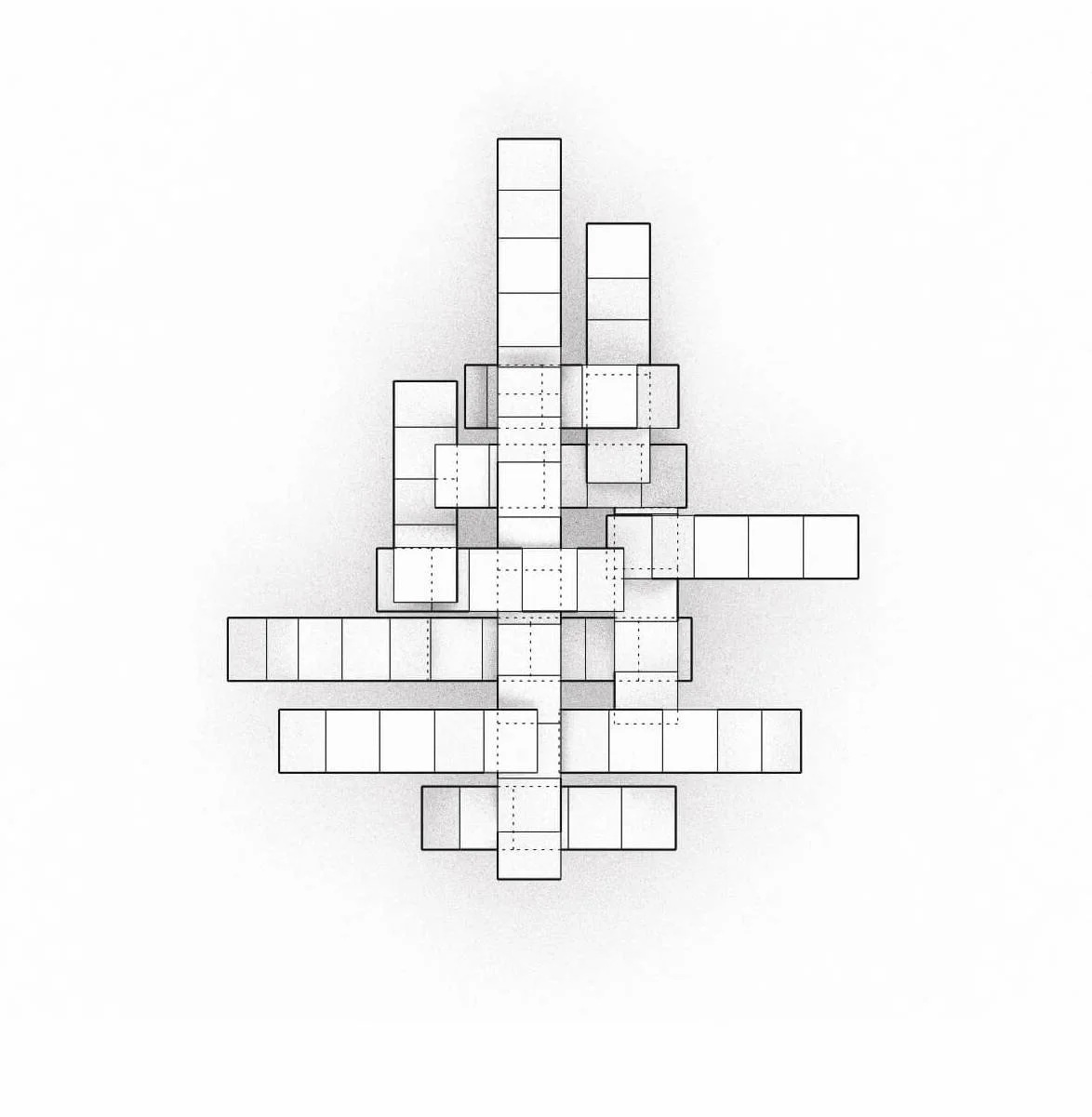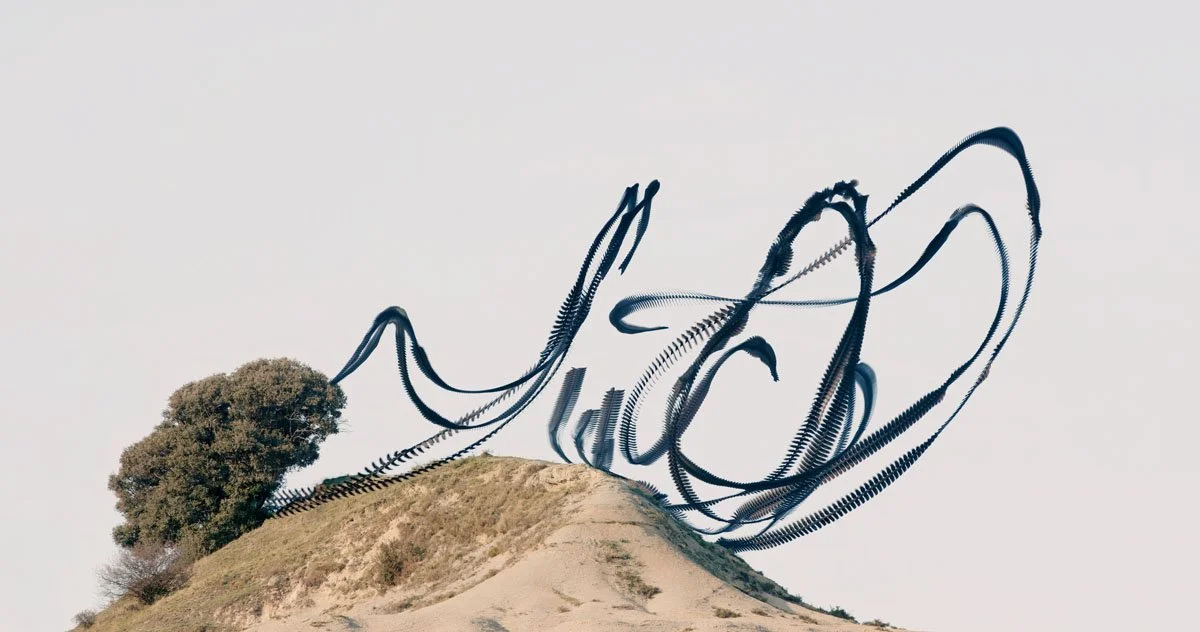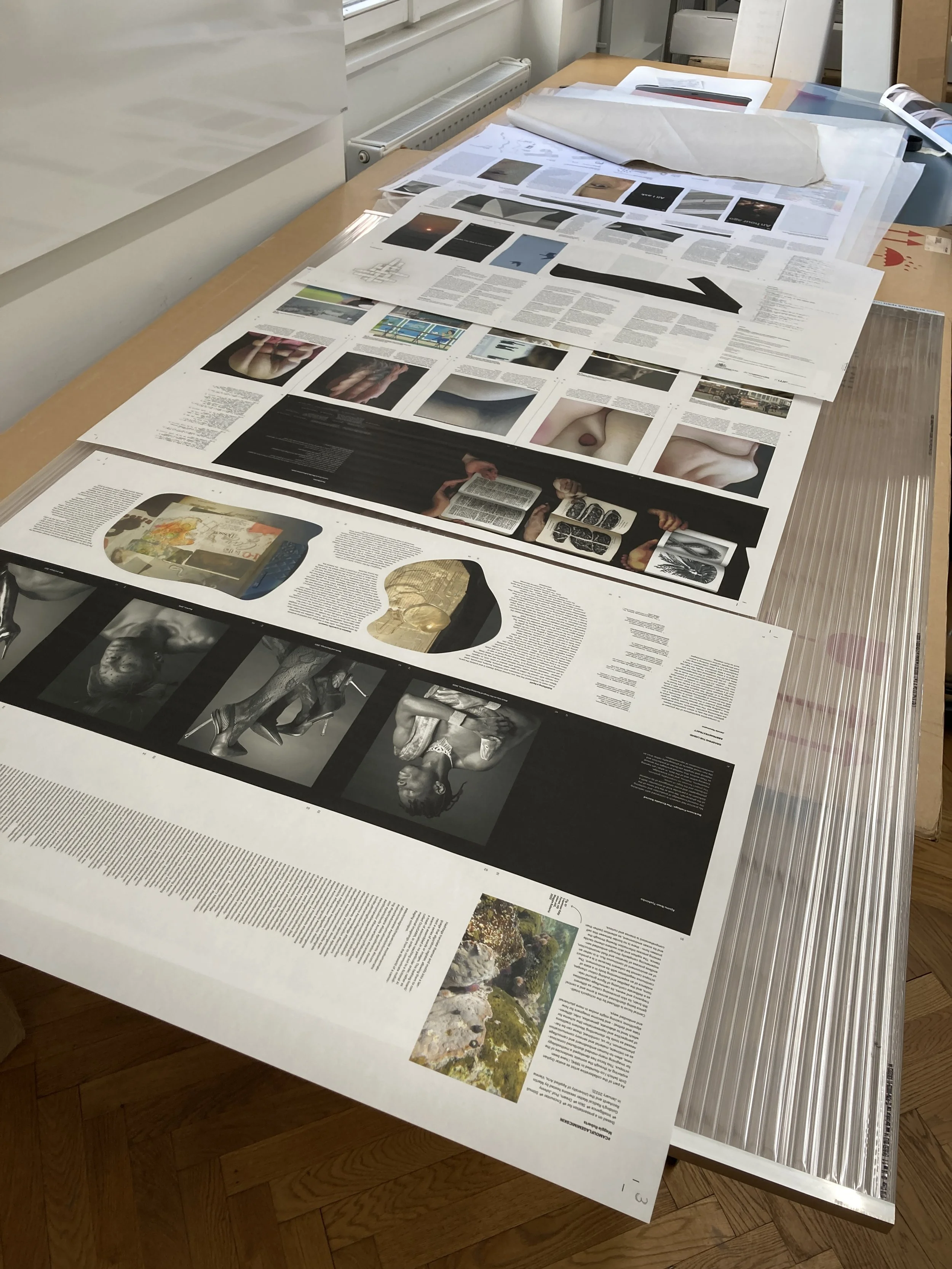Throughout the duration of the radical⇌matter project, two journals will be published at irregular intervals, presenting current activities and interim results.
radical⇌matter Journal # One was presented on 7 March 2023 as part of the opening of the troubling the story event and workshop, that took place at the Iklectic gallery in London. It features contributions by Sonia Bernac, Jonathan Boyd, Johnny Golding, Ajamu Ikwe-Tyehimba, Manu Luksch, Janis Neumann, Mukul Patel, Maggie Roberts, Dario Srbic, Linn Phyllis Seeger, Shira Wachsmann and John Wild. For the digital version click here .
radical⇌matter Journal # Two will be presented at the opening of the radical⇌matter exhibition, which will take place in Vienna between 25 January and 16 February 2024.
Growing an octopus
When defining a scientific journal as a type of magazine, we consider aspects such as periodicity, recurrence, finiteness, and closure. The action of addressing dated issues, resulting in content that is somewhat outdated upon publication. Discussing current topics versus sharing fixed/past content. And of course, there is a strong component of interconnected community at the base of a peer reviewed publication.
Instead of designing a series of publications, where one follows the next, amassing to a sort of archival row that showcases their chronological development, we were seduced by a form that inherits a certain octopusness, one that grows new tentacles, with multiple brains continuously interconnecting with each other through a central network of impulses. The octopus is featured in the articles of both Johnny Golding and Maggie Roberts, the last of which describes that «the Octopus cannot be coherent because it is a product of an environment of continuous flux». A journal that grows, rather than being built. On matters of discussion and community, and unfixed content within a specialisation, the Whole Earth Catalogue came to mind, because it encompassed an ever expanding archive of ideas that were added by different entities, reviewed by very simple principles and organised by a series of overarching topics. As Benjamin, once more, would put it, «Fragments of a vessel that are to be glued together must match one another in the smallest details, although they need not be like one another».
Shaping the shapeless
All these previously mentioned aspects of possible future encounters and quadrimensionality – allowing the newer and older content to form new symbiotic bodies–pushed the Journal to be something more than the glued booklet it was meant to be. In our deliberations, we resolved that the journal's issues ought to exhibit reorganisable frameworks, not confined solely to linear sequencing but rather capable of harmoniously blending into one another with the infusion of new content. This adaptability extends to the dual-sided nature of printed publication pages, where such integration transpires concurrently on both facets.
The prototype we developed from here was one of tentacles – which we internally called snakes, referring to the Snakes and Ladders game – extended paper leporellos that, folded, allowed to navigate the content by turning pages in the manner of a bound publication, but extended allowed instead a much greater variety of framing of the content. Some of the images in the project could be displayed in a larger size, taking up the length of several pages, dividing their details one by one and showing their full body when extended; collections of images were created from the extended sequence of several pages, including content from different articles. A reader could, of course, fold one or more leporellos by combining non-subsequent pages, creating new bound publications.
Each issue of the Journal was at that time made up of a single paper snake, which was intended to blend in with later issues. Due to the technical limitations of the printing tools we used to make the first prototype, our snakes could only be printed on one side, so we decided to split their contents into two snakes of the same length, one opaque and one semi-transparent. Folded one on top of the other they completed each other's content, but naturally also offered the game of superimposing it in different orders, directions and suggestive encounters. In our imaginary, a collection of issues of the journal would have the character of the Ornithographies of Xavi Bou, an amalgam of contents and authors in murmuration, that together produce this image of suspended tentacles, intertwined.
the radical⇌matter journal and prototype
by Ivonne Gracia and Maximilian Gallo
We like the words translate and spirit, as we discovered taking our notes on what was important to say about the Journal, and combining them with what we wrote two years ago for the Data Loam book. This is, of course, not surprising, given that it is the task of every designer to translate a certain spirit into the physical form of an object, which shall be, very pragmatically, produced and distributed. One has always the feeling, however, of trapping the spirit in too limiting a cavity, too inflexible a form. The challenge resides in making the theoretical concepts at the core of a project like radical⇌matter–in its multifaceted manyfolded-ilusiveness–endure, and give space to them, while aiming for a publication that can be mass-printed in the domain at hand. This requires a process of dedicated distillation of spirits.
The process through which we distilled the radical⇌matter journal into its form was developed during the translation of the Data Loam project into a printed publication. It encompassed creating a publication prototype, that could be described as a blueprint of the project itself, unbound by the all-too worldly constraints of a printable book. Translation is a creative act in itself, resulting in a work of its own, very different from the production of a programmed mechanical process. As Benjamin wrote, «it is self-evident how greatly fidelity in reproducing the form impedes the rendering of the sense». Translation is an act of creation. And hence, it is not surprising to find translation and spirit at the basis of both projects, as long as one understands translation as the act of creating a new body, in accordance with the spirit that is to inhabit it. This particular spirit was one of tentacles and encounters, of gooey-blobbish masses, meandering, murmuring and flocking entities.
Possibilities of encounters
Above all, what the Journal needed to be, was an option for encounters, a possibility of sticky cohesions. Every publication is in itself a platform for encounters, in which time and space are compressed between input and reader, something on which we had already expanded. And every publication is also an encounter of inputs that form a symbiotic body, under its own name. radical⇌matter, however, challenged us to propose the possibility of new encounters, future and past, to emphasise the potential of an unexpected connection between disparate entities, which changes both, and does not dissolve even when these entities separate again. A synaptic connection related to those «spooky action at a distance». Regarding these, we were thinking in three dimensions – in four, if we account for the fact that what is printed after can get combined with what has been printed before. A shape that folds in itself and can unfold always in different orders.
Ornithography #197 by Xavi Bou
Unfolding the prototype
At this point in our research of form, the actual content of the first issue of the Journal did not yet exist, and the prototype was to be presented at the first group exhibition of the project: From There Through Here, a collaboration between radical matter and the Art & Science department of the University of Applied Arts Vienna, opening on June 2022, at the Künstlerhaus Wien. This serendipitous opportunity allowed us the freedom of not yet having to confront the task of housing the stricter peer-reviewed articles of a scientific publication in these experimental tentacles.
To populate it, we chose all the content that had led to the creation of to the pieces in the exhibition: Johnny Golding's text in their presentation of the project to the students of the department was gradually mixed with the notes that the students took, in their own handwriting, in their individual reflection on their encounter with the concepts to which they were being introduced. Little by little, images appeared, documentation of exercises and tests that each artist carried out on their own, sketches of their pieces and installations as they formed the body that they finally presented in the exhibition.
Some of them documented these processes in videos, so we used AR to hide these printed recordings between the pages, accessible through a free app. Along with the QR codes to download this app, we added a warning to the outer band around each issue: “AR content is hidden in this issue”. As always in our joint projects with Martin Reinhart and Johnny Golding, there must be elements of play, search, experience of using the publication. All the content, as previously mentioned, was divided into an opaque and a semi-transparent paper snake, so that to read the full text one had to superimpose them in a specific order, and to see their layers of content in detail one had to separate them instead. Following our custom of giving agency over content to parties outside the design or editorial team, we added as much of the content as possible from what the students shared with us, in the unedited form in which they sent it. Their wonderful handwritten notes created clouds of strange and intriguing statements, suggestive and inexplicable questions, and were undoubtedly the most satisfying fruit of our first prototype.
To display the various hand-cut and hand-folded copies of the first prototype of the radical matter Journal, we designed four wooden slatted frames with occasional internal openings that, combined, formed a multi-way structure from which to hang and combine the paper snakes. A small transparent shelf hung from the floating structure, containing copies of the issue wrapped in their bands that visitors to the exhibition could take away with them.
The prototype at the From here through there exhibiton that took place 03-09 June 2022 in the Künstlerhaus Factory
The Journal
When the time came to translate the prototype form into a design adapted to serial printing, in opposition to our previous work, we did not have to face major disagreements between our prototype and the printed format. We set aside printing an entire edition on a single continuous paper snake, opting instead for separate snakes for each article. To accommodate our printer's paper sheet sizes, and to leave as little excess material as possible, the snakes would be made up of five pages, printed on both sides, resulting in ten segments. The amount of characters that each author had at their disposal came from our estimation of how much content we could fit on these ten segments. The font and its size, which served to make this approximation, were to be inherited from the Data Loam book – a continuation of the collaborative work of the same team, aiming to relate our efforts in a series and reaffirm our visual language.
Another element we kept as a fundamental part of this language was the subversive use of footnotes. As in Data Loam, these are a weighty component of our journal layout. Rather than being merely collected at the bottom of each page or at the end of each article – in a steady rhythm that plays unnoticed – we give these notes the importance of independent entities, sometimes even on the same level as the main text. Their position and character changes with each article, adapting to the temper of the content. Sometimes they are positioned in the margins, accompanying the text, sometimes bursting into the main body, deforming its columns.
On one occasion they may be framed in rigid rectangles positioned exactly next to the numeral that marks the reference in the text, efficiently; on another they are sinuous clusters of letters that slide from one column to another. Like the varied collective of authors that make up the edition, with such diverse modes of expression, the notes also take on different characteristics both from the text and the authors; playful like their touches of humour, strict like their technical descriptions. In one article, all the notes are accumulated at the beginning, as an introduction. The first thing one reads from this piece is the referenced sources, the annotations between the lines. In the spirit of the Dictionnaire historique et critique of Pierre Bayle, the layout of the journal gives a visual account of a fundamental factor: sometimes, the crux is hidden in the secondary notes, the subversiveness in the comments.
Separating the articles into loose snakes – some containing more than one article within them – naturally allows for a much greater play of combinations, not only among more than one issue of the journal, but within each issue itself. We did allow ourselves to add a few more diversions, some more obvious than others. One author's article, written in SuperCollider programming code, is divided into small pieces scattered throughout multiple snakes. A piece of the radical⇌matter logo suddenly appears between two articles; putting together four particular pages in a specific order completes it. Most articles are read holding the snakes horizontally, some call for the reader to turn them vertically. The background oscillates between black and white. The editorial – consisting entirely of an extensive collection of definitions of radical⇌matter – is the only text in colour, but it uses the full colour-range of the visible spectrum, an idea from our mad editors.
As usual, we include instructions, which we call (with a wink) "serving suggestion". Following another foundation of our language, we try to make the table of contents a component with character. On this occasion, a tentacle stretches across several pages, tentatively introduced from its tip in the acknowledgments column, and ending three pages later, where it would be to meet the body of the octopus. This tentacle transforms along its length into other elements, references to the authors' works, ending in the shape of the same paper strips that contain it. It symbolises the journal, it represents the way it was thought, the spirit of the project, the octopus being at the centre of more than one of the works at the base of it.
Printing of the prototype “snakes” in the Digital Photography department at the University of applied arts in March 2023.
Separating the articles into loose snakes – some containing more than one article within them – naturally allows for a much greater play of combinations, not only among more than one issue of the journal, but within each issue itself. We did allow ourselves to add a few more diversions, some more obvious than others. One author's article, written in SuperCollider programming code, is divided into small pieces scattered throughout multiple snakes. A piece of the radical⇌matter logo suddenly appears between two articles; putting together four particular pages in a specific order completes it. Most articles are read holding the snakes horizontally, some call for the reader to turn them vertically. The background oscillates between black and white. The editorial – consisting entirely of an extensive collection of definitions of radical⇌matter – is the only text in colour, but it uses the full colour-range of the visible spectrum, an idea from our mad editors.
As usual, we include instructions, which we call (with a wink) "serving suggestion". Following another foundation of our language, we try to make the table of contents a component with character. On this occasion, a tentacle stretches across several pages, tentatively introduced from its tip in the acknowledgments column, and ending three pages later, where it would be to meet the body of the octopus. This tentacle transforms along its length into other elements, references to the authors' works, ending in the shape of the same paper strips that contain it. It symbolises the journal, it represents the way it was thought, the spirit of the project, the octopus being at the centre of more than one of the works at the base of it.
Before going into mass production, we made a prototype of this edition as well, a single one, cut and folded by hand. We needed to manually experience our proposal, playing with it, as we intended our unknown readers to do. It worked. The counter-positions that emerge between pieces of different articles during the mix&match game it offers are at times graceful, powerful, significant. The same content looks different when the whole journal is spread out in intertwining tentacles, in the game of snakes and ladders.
The prototype of the first edition was presented at the opening of troubling the story exhibition at the Iklectic creative space in London, on the 7th of March, 2023. The reception was good, the authors posed holding the leporello containing their work. The fact that at the closing of the event two of the snakes were missing was for us nothing more than a nice compliment.
After reprinting and replacing the two missing pieces, the journal was also installed in the Art&Science department of die Angewandte Kunst Vienna, for the Open Studio 2023 in June, this time in its intertwined web form. The pieces clung to each other using only magnets, for this encounter was to be, as we know, momentary and changeable, just one possibility among thousands.
Finally, also the web version that gives access to the journal in digital format imitates its physical body. The pages of each individual snake are presented in horizontal sliders, one below the other, so that the visitor can also mix them on the web.
We write these lines in anticipation of experiencing the two issues as one unified entity, not side by side but together, amalgamated in a sort of ball of tentacles, becoming a single network of brains.




